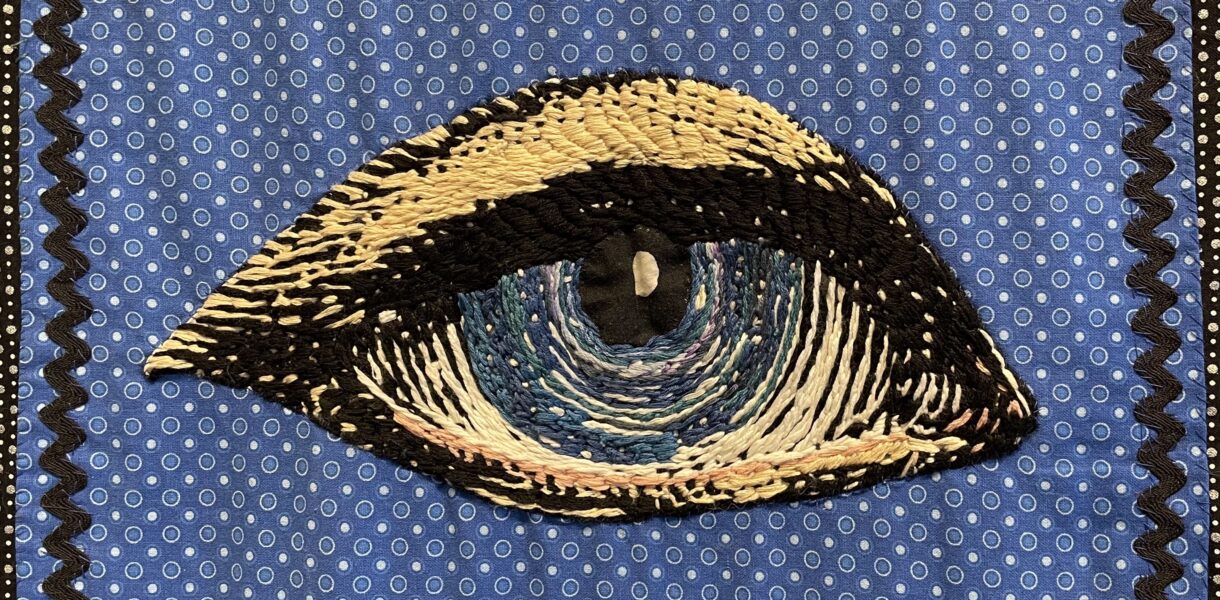By Calder Anderson
Oakland is currently home to two extraordinary exhibitions that showcase the powerful artistry of quiltmaking. Joyce Gordon Gallery, in collaboration with the Martin Luther King Jr. Freedom Center, is exhibiting the monumental quilts of Gee’s Bend in The Quilter’s of Gee’s Bend, Alabama while Mercury Twenty Gallery shows Stopped in Motion: Pandemic Art Quilts, a series of “round robin” quilts made collectively by a group of artists over the last three years.
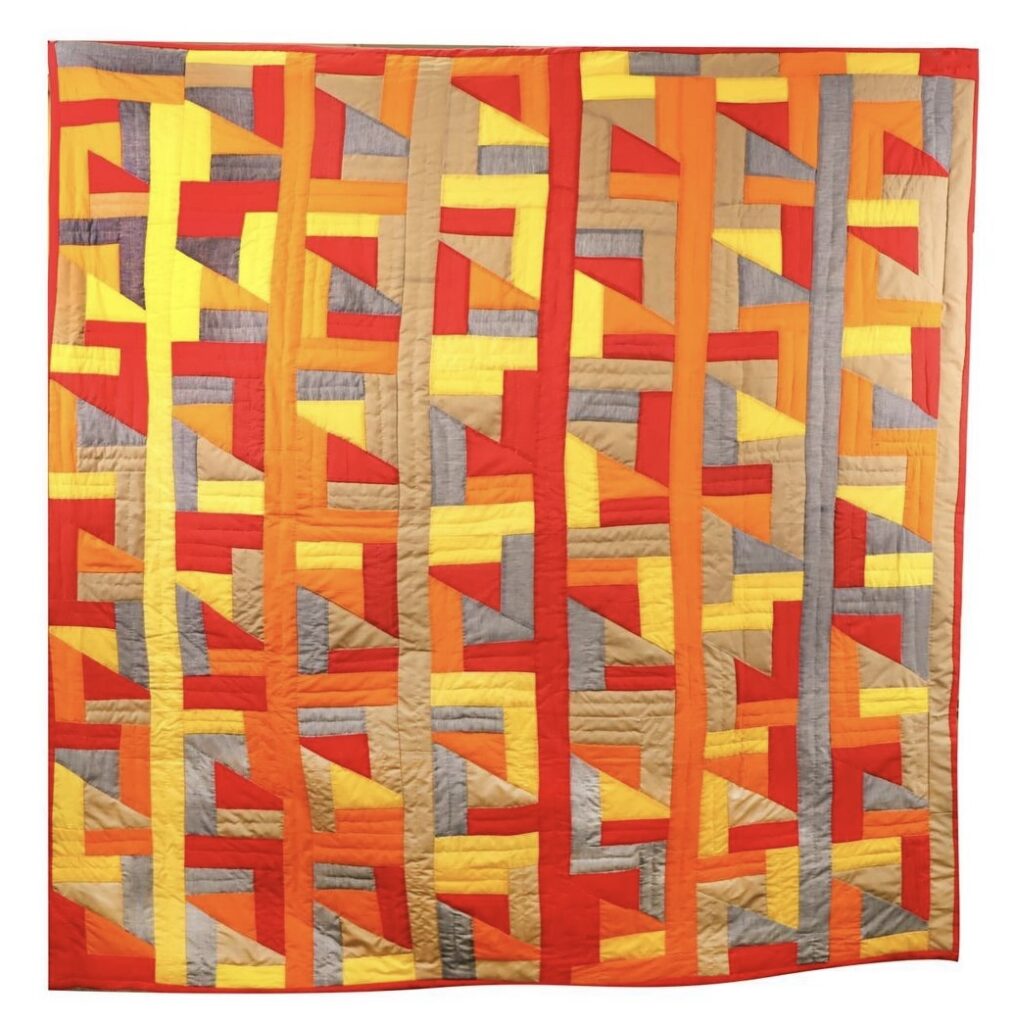
In its simplest form, quilting is the joining together of pieces of fabric. Quilts can be found in virtually every cultural tradition with much of its history rooted in utilitarian, decorative, and religious and spiritual purposes. Quilts are most universally used for warmth and protection, however, they are also made as markers of significant moments and identities. Quilts gather the language of their environment – pulling from the textiles and fabrics of their regions, their local histories, symbols and motifs – ultimately telling the rich and intricate stories of their creators.
The improvisational and expressionistic quilts of The Quilts of Gee’s Bend, Alabama, with their exemplary style and historical significance, are some of the greatest examples of American modern art we see today. The quilts have been shown and collected globally, most notably at the Whitney Museum of American Art, The Smithsonian, The Metropolitan Museum of Art and Turner Contemporary. Gee’s Bend quilts rely on fluidity and freedom for their unique flare, leaving behind the blocks and forms of traditional quilting. The patterns, some appearing seemingly happenstance, come together in such striking fashion only seen in the finest genres of modern art. Echoes of cubism, abstract expressionism and modernism situate the quilts and their makers at a critical point in American history.
The Gee’s Bend quilting tradition was started by enslaved women on a cotton plantation established by Joseph Gee who took over the small, isolated Alabama community in the early 19th century. Over the next two centuries, the Gee’s Bend quilters and their descendents carried on a rich and unique style of quiltmaking that still continues today. In Eric Murphy’s words, the show’s curator, their craft captures “the stories of Black history and the power of collective, intergenerational collaboration [that has now] spread far beyond the town limits of Gee’s Bend.” Current Gee’s Bend quilters, many of whom still live in the area and are part of the Gee’s Bend Quilting Collective established in 2003, learned their craft from their mothers and grandmothers who, in turn, learned it from theirs. Now, grandsons are learning, too. There is a vibrant lineage of makers whose work “stand[s] witness to generations of challenge and triumph. They tell stories of the singular importance of community work in unifying and lifting up.”
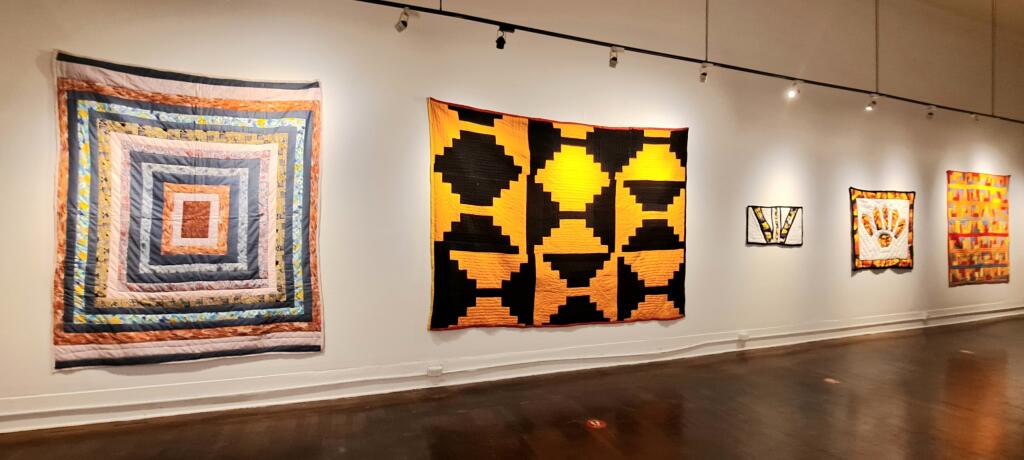
Gee’s Bend quilts, though not solely, are often made in quilting bees where groups of artists work collectively around the frame of a single quilt. This act of coming together, sharing space and working towards a common goal is one of the most vital and human acts. It is significant that, through this simple act, such astounding beauty and important, ongoing history is explored.
Mercury Twenty Gallery’s Stopped in Motion tells the story of 14 women who came together in 2019 to create a “round robin” quilt. Round robin quilting is another form of group quilting but differs in that quilts are passed from group member to group member instead of being worked on together around a shared frame. The process starts with one individual who begins a quilt with a single block. That block is then passed to another quilter who adds their block and then passes it along again until the quilt is complete. Though the quilters had set up the round robin system prior to the pandemic, in a curious and somewhat serendipitous way, this system became an essential framework for the success of the project. Each of the artists started their own quilt that was then passed amongst group members via doorstop drop offs throughout the pandemic – not seen by the original artist until their completion in 2023. The result is a stunning body of work that captures not only the creative expertise of its makers but the solace and weight of the last three years.
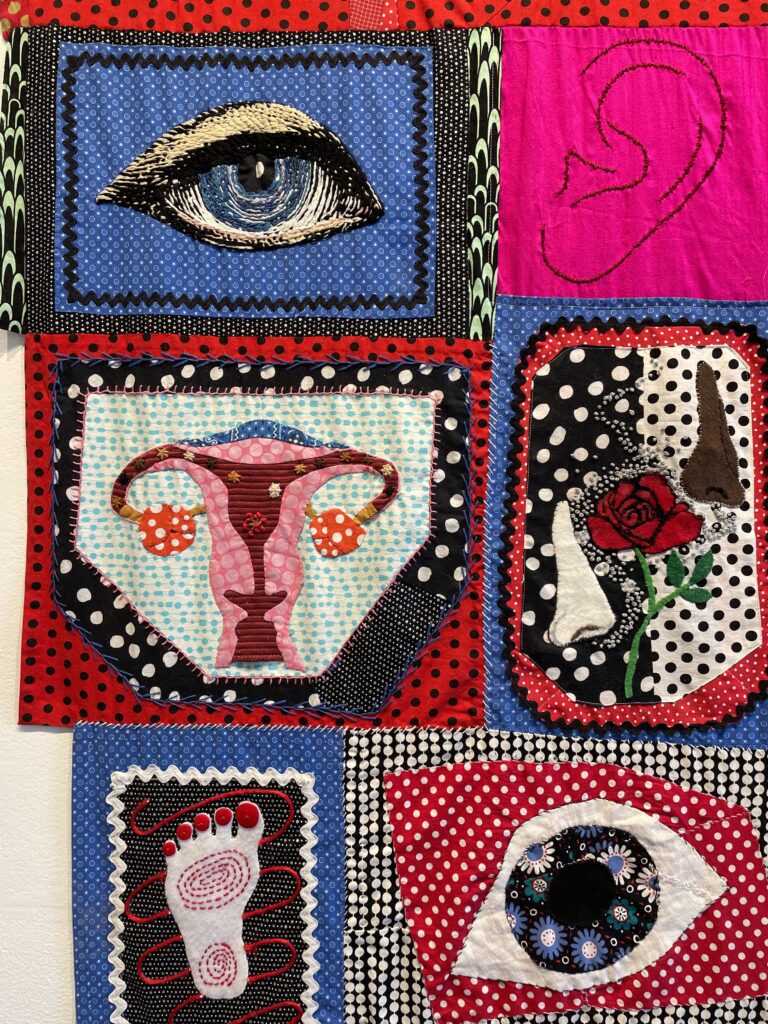
Similar to the tradition-breaking style of Gee’s Bend quilts, there were no rules in this round robin – each artist was entitled to add whatever element they wanted to each quilt. Though each one is entirely its own, you can see the artists’ unique hands represented throughout each of the works. Some are abstract, some whimsical, some cohesive and others loose. One quilt is a pictorial and imaginative sea scene that takes the viewer to some place otherworldly. Other quilts represent timely issues; one showing disembodied female anatomy reminiscent of changing abortion laws and another a stitched image of George Floyd next to the words “Anger Courage Change.” The pieces become a collection of pivotal moments – whether personal or collective – that have changed us in recent history.
Jessica Cadkin, one of the artists and the curator of the exhibition, was thrilled to finally see the completed quilts in the gallery after so many years and to have them be experienced – in person – by the greater community. There is a sense of wonder and magic when witnessing the works. They show that even in the face of incredible pain and uncertainty, there is a desire to overcome. It reminds us that we will always and forever be connected to one another, even in separateness.
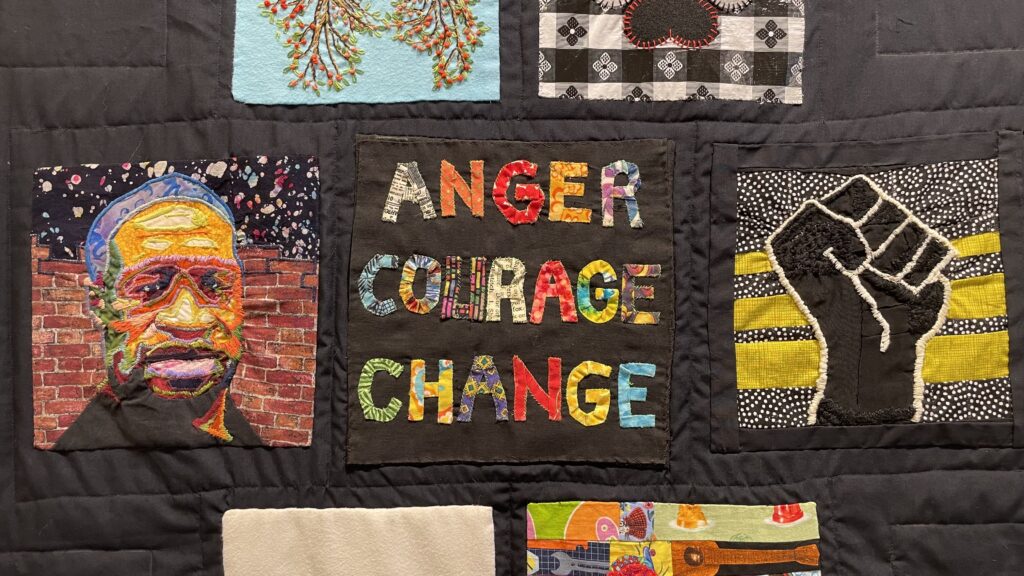
Both exhibitions are monumental in their own right. The Quilters of Gee’s Bend, Alabama showcases nine astounding quilts that are rich with over two centuries of Black history, community and paramount expertise. Stopped in Motion is a glimpse of history happening in real time as we collectively grapple with isolation amidst current realities. Both bodies of work – conceptually and by nature of their design – exhibit the importance of community, the throes of its fracturing, and the enduring strength of coming together again. The two exemplary shows culminate the importance of the centuries-long tradition of quilt making. It is a labor of love and necessity, a means of coming together, of mourning and celebrating – it is the collected story of its makers and, in that sense, the quilts are alive.
The Quilter’s of Gee’s Bend, Alabama will be on view at Joyce Gordon Gallery through April 1. Artists include Mary Ann Pettway, China Pettway, Mary L. Pettway, Arionzia Pettway, Julia Pettway, Loretta Pettway, Annie Kennedy, Alexander Smith, and Deshuan Smith.
Stopped in Motion: Pandemic Art Quilts will be on view at Mercury Twenty Gallery through March 18. Artists include Susie Alegria, Leigh Barbier, Jean Bolte, Jessica Cadkin, Victoria Drake, Peggy Hrastar, Christine Lashaw, Terry Molatore, Sarah Pyle, Ellen Ridgway, Gretchen Scharfenberg, Julie Slinger, Lauren Vogt, and Melanie Walas.
—————————————————————————————————————————
Calder Anderson is an artist manager, writer, and consultant. She provides branding, marketing, strategy, and copywriting expertise to a wide range of clients mainly in the arts and non-profit sectors. She was formerly the Assistant Director at Hosfelt Gallery in San Francisco as well as holding positions at Pace Gallery. Calder has a Bachelor’s Degree in Fine Art and Psychology from the University of California, Santa Cruz.
Image Credits:
- [Header Image] Courtesy of Mercury Twenty Gallery
- Courtesy of Gee’s Bend Quilting Collective
- Courtesy of Joyce Gordon Gallery and Gee’s Bend Quilting Collective
- Courtesy of Mercury Twenty Gallery
- Courtesy of Mercury Twenty Gallery

